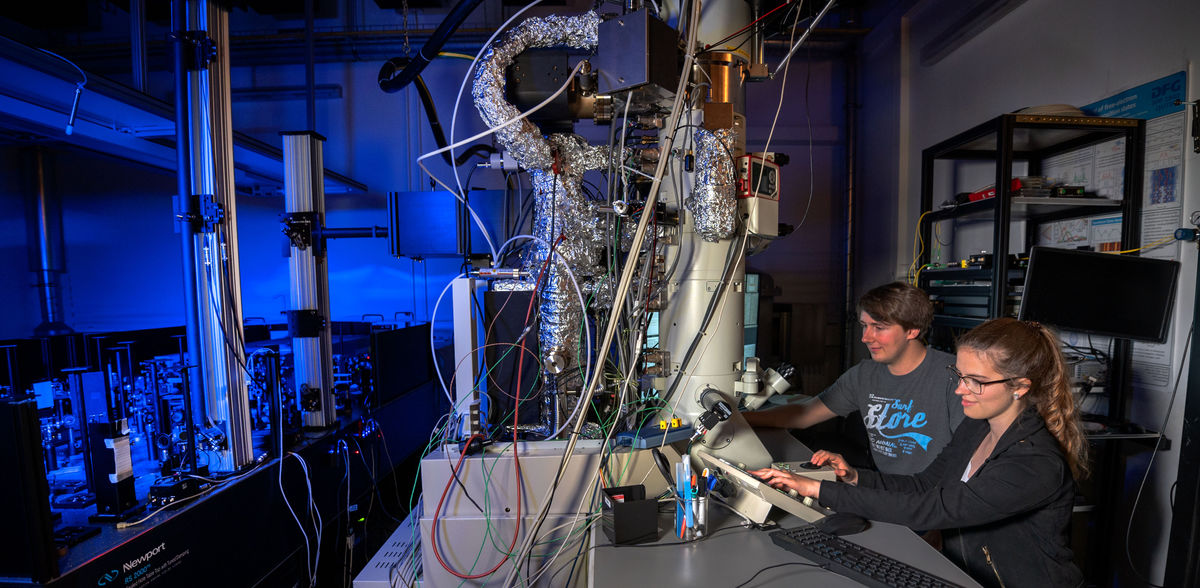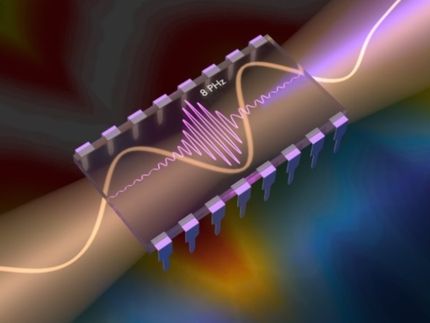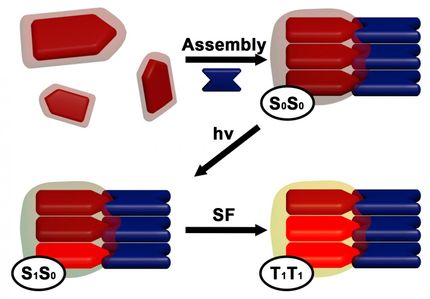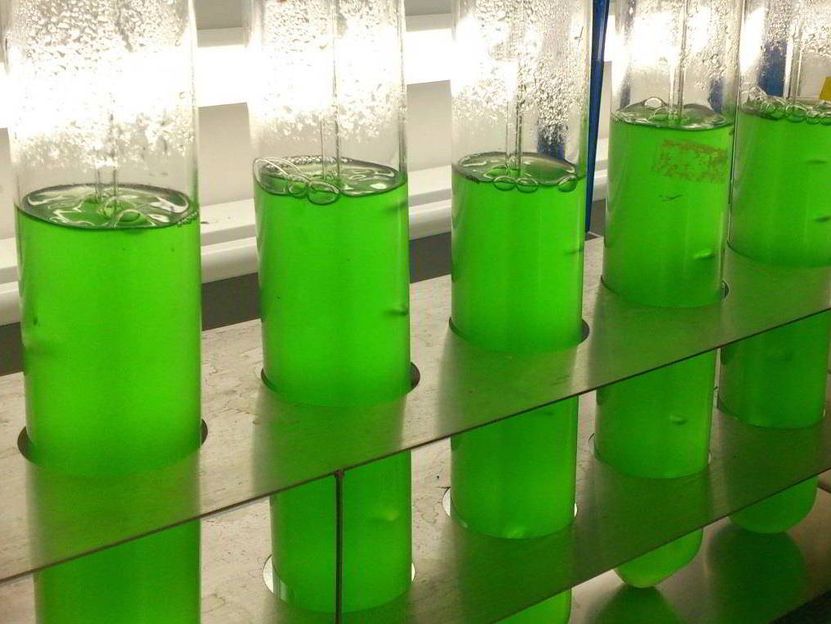“Optical fingerprints” on an electron beam
Researchers observe non-linear optical processes in the electron microscope
The precise control of electron beams in so-called transmission electron microscopes (TEM) makes it possible to analyze materials or molecules at the atomic level. Combined with short light pulses, these devices can also be used to analyze dynamic processes. Researchers from Göttingen and Switzerland have now shown for the first time how electrons can distinguish complex light states in a microscopic light storage in a TEM.
How can we use light to store information? Or utilize it to transmit data at lightning speed? The research field of photonics deals with these and many other questions. Modern integrated photonics makes it possible, for example, to guide or manipulate light in channels on a microchip. So-called non-linear optical processes can also be used, in which new colors or extremely short light pulses are created for very high light intensities. These technologies are already being used in telecommunications, for optical distance and speed measurements, and in quantum computing.
Recently, new interfaces between photonics and other research fields, such as electron microscopy, have increasingly emerged. For example, optical microchips have recently been able to influence electron beams. In turn, electrons can be used to measure light fields. When an electron passes through an intense light field, it is accelerated or decelerated depending on its arrival time and the strength of the field. Scientists can then draw direct conclusions about the light’s properties from the changed speed of the electron.
In a new study published in the journal Science, a team led by Claus Ropers from the Max Planck Institute (MPI) for Multidisciplinary Sciences in Göttingen and Tobias Kippenberg from the Swiss Federal Institute of Technology in Lausanne (EPFL) has now investigated various non-linear optical processes using an electron beam. To do this, they placed a ring-shaped light storage device, a so-called microresonator, in a TEM and generated light with different waveforms in it. Based on the characteristic interaction with the electron beam, they were then able to analyze the different light states in detail.
“If we position the electron beam in such a way that the electrons fly past the resonators, we can measure the exact influence of the light field on the electron energy,” explains Jan-Wilke Henke from the MPI. His colleague Jasmin Kappert adds: “Each of the light’s possible waveforms leaves a characteristic fingerprint in the electron spectrum, which enables us to trace the formation of the different states.” The two doctoral students carried out the experiments in the Laboratory for Ultrafast Transmission Electron Microscopy at the MPI in Göttingen. The required photonic chips were developed by the team in Lausanne.
However, the researchers not only succeeded in characterizing light fields based on their effect on electrons: “In our experiments, we also generated so-called solitons – stable, ultrashort light pulses lasting less than one tenth of a trillionth of a second,” explains physicist Yujia Yang from EPFL. The possibility of generating solitons in a TEM extends the use of non-linear optics and microresonators into unexplored areas, says Tobias Kippenberg. “The interaction between electrons and solitons could, among other things, enable ultrafast electron microscopy with an unprecedentedly high repetition rate.”
Max Planck Director Claus Ropers adds: “Our results show that electron microscopy is ideally suited for investigating non-linear optical dynamics on the nanoscale. We also assume that there will be many more applications for this technology in the future, both for the spatial and temporal manipulation of electron beams.”
Original publication
Most read news
Original publication
Yujia Yang, Jan-Wilke Henke, Arslan S. Raja, F. Jasmin Kappert, Guanhao Huang, Germaine Arend, Zheru Qiu, Armin Feist, Rui Ning Wang, Aleksandr Tusnin, Alexey Tikan, Claus Ropers, Tobias J. Kippenberg; "Free-electron interaction with nonlinear optical states in microresonators"; Science, Volume 383
Topics
Organizations
Other news from the department science

Get the chemical industry in your inbox
By submitting this form you agree that LUMITOS AG will send you the newsletter(s) selected above by email. Your data will not be passed on to third parties. Your data will be stored and processed in accordance with our data protection regulations. LUMITOS may contact you by email for the purpose of advertising or market and opinion surveys. You can revoke your consent at any time without giving reasons to LUMITOS AG, Ernst-Augustin-Str. 2, 12489 Berlin, Germany or by e-mail at revoke@lumitos.com with effect for the future. In addition, each email contains a link to unsubscribe from the corresponding newsletter.































































